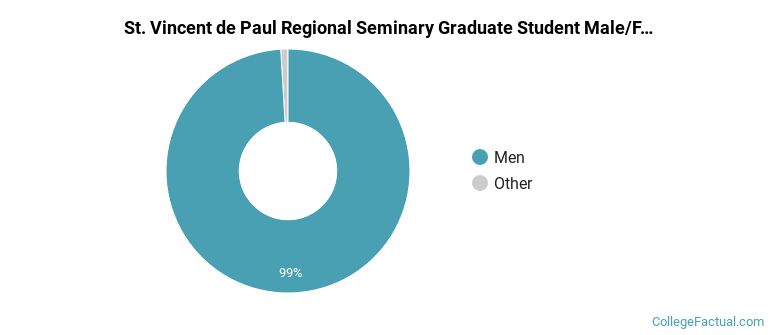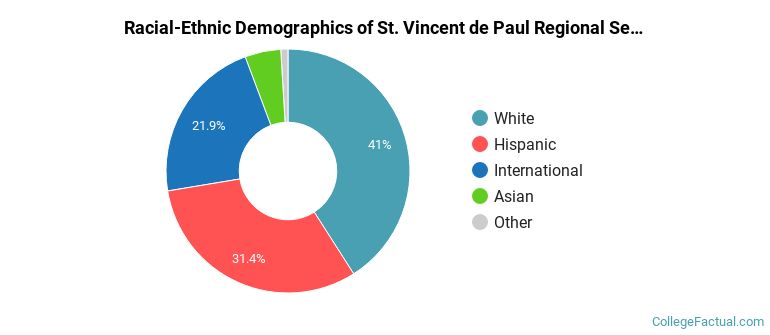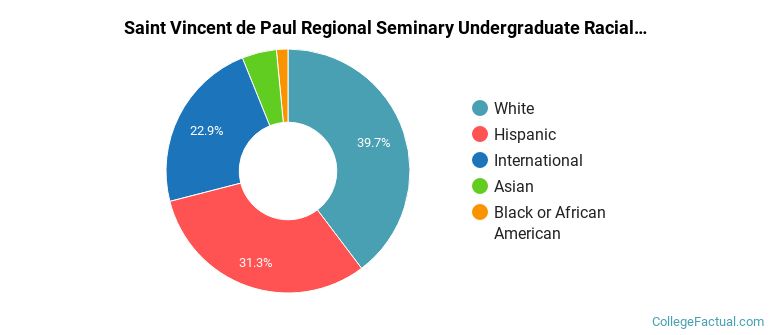 by our College Data Analytics Team
by our College Data Analytics TeamSt. Vincent de Paul Regional Seminary total enrollment is approximately 142 students.
See racial/ethnic breakdown for all students.
Male/Female Breakdown of Graduate Students
About 1% of full-time grad students are women, and 99% men.

For the gender breakdown for all students, go here.
St. Vincent de Paul Regional Seminary Racial-Ethnic Breakdown of Graduate Students

| Race/Ethnicity | Number |
|---|---|
| White | 52 |
| Hispanic | 37 |
| International | 25 |
| Asian | 4 |
| Black or African American | 1 |
| Native Hawaiian or Pacific Islander | 0 |
| Multi-Ethnic | 0 |
| Unknown | 0 |
See racial/ethnic breakdown for all students.

| Race/Ethnicity | Number |
|---|---|
| White | 59 |
| Hispanic | 45 |
| International | 31 |
| Asian | 4 |
| Black or African American | 2 |
| Multi-Ethnic | 1 |
| Native Hawaiian or Pacific Islander | 0 |
| Unknown | 0 |

There are approximately 2 female students and 140 male students at St. Vincent de Paul Regional Seminary.
A traditional college student is defined as being between the ages of 18-21. At St. Vincent de Paul Regional Seminary, 1.37% of students fall into that category, compared to the national average of 60%.

| Student Age Group | Amount |
|---|---|
| 25-29 | 56 |
| 35 and over | 49 |
| 30-34 | 23 |
| 22-24 | 13 |
| 20-21 | 2 |
| 18-19 | 0 |
| Under 18 | 0 |
Footnotes
*The racial-ethnic minorities count is calculated by taking the total number of students and subtracting white students, international students, and students whose race/ethnicity was unknown. This number is then divided by the total number of students at the school to obtain the racial-ethnic minorities percentage.
References
Department of Homeland Security Citizenship and Immigration Services
Find out how College Factual created their Diversity Rankings.